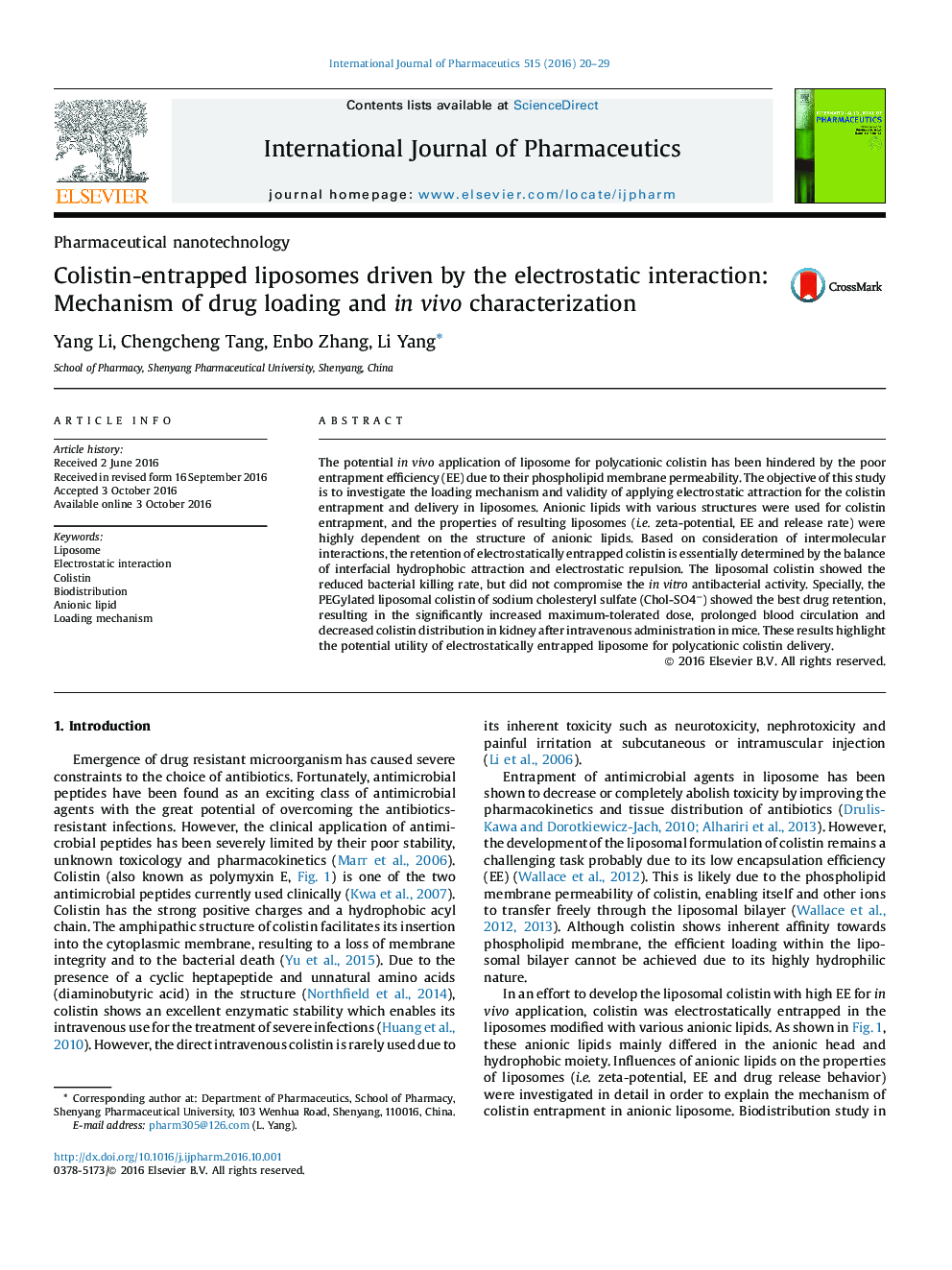| Article ID | Journal | Published Year | Pages | File Type |
|---|---|---|---|---|
| 5550886 | International Journal of Pharmaceutics | 2016 | 10 Pages |
The potential in vivo application of liposome for polycationic colistin has been hindered by the poor entrapment efficiency (EE) due to their phospholipid membrane permeability. The objective of this study is to investigate the loading mechanism and validity of applying electrostatic attraction for the colistin entrapment and delivery in liposomes. Anionic lipids with various structures were used for colistin entrapment, and the properties of resulting liposomes (i.e. zeta-potential, EE and release rate) were highly dependent on the structure of anionic lipids. Based on consideration of intermolecular interactions, the retention of electrostatically entrapped colistin is essentially determined by the balance of interfacial hydrophobic attraction and electrostatic repulsion. The liposomal colistin showed the reduced bacterial killing rate, but did not compromise the in vitro antibacterial activity. Specially, the PEGylated liposomal colistin of sodium cholesteryl sulfate (Chol-SO4â) showed the best drug retention, resulting in the significantly increased maximum-tolerated dose, prolonged blood circulation and decreased colistin distribution in kidney after intravenous administration in mice. These results highlight the potential utility of electrostatically entrapped liposome for polycationic colistin delivery.
Graphical abstractDownload high-res image (192KB)Download full-size image
